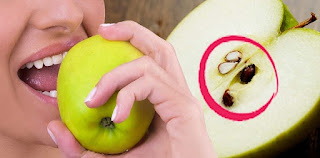Overview
Mango fruit is “the king of all fruits” and is one amongst popular, nutritionally wealthy fruits with unique flavor, fragrance, taste, and health-promoting qualities. The mango is native to South Asia, from wherever it's been taken to become one in every of the foremost wide cultivated fruits within the tropics. It forms a part of daily diet within the high season. It is available in lots throughout the summer. Its botanical name is Mangifera Indica.Types of Mango
- Banganapalli
- Chausa
- Dashehari
- Kesar
- Langra
- Pairi
Nutritional Value
Mango is a rich source of sodium, potassium, vitamin A, Calcium, vitamin b-6, and vitamin C.Serving Size: 165 grams
| Energy - 99 kcal | Carbohydrates - 28 g |
| Saturated Fat - 0.2 g | Monosaturated Fat - 0.2 g |
| Dietary Fiber - 3 g | Sodium - 1.7 mg |
| Potassium - 277.4 mg | Sugar - 24 g |
| Protein - 1.5 g | Vitamin A - 35% |
| Calcium - 2% | Vitamin C - 100% |
| Vitamin b-6 - 12% | Magnesium - 5% |
Also See
Health Benefits of Mango
Treat Diabetes
The people with type 1 diabetes who consume high-fiber diets have lower blood glucose levels; and individuals with type 2 diabetes may have improved blood sugar, lipids, and insulin levels. One cup of mango provides about 3 grams of fiber.Prevention of Asthma
Mangoes are an excellent source of vitamin C, were Asthma, though common, can have serious repercussions. But with a bowl of mangoes on your kitchen counter, you probably don’t have to worry much. The risk of developing asthma is lower in people who consume a high amount of nutrients.Hair and Skin health
Mangoes are nice for your hair as a result of they contain vitamin A, a nutrient needed for secretion production that keeps hair moisturized. Vitamin A is additionally necessary for the expansion of all bodily tissues, as well as skin and hair. Adequate intake of antioxidant, found in barely one cup of mango per day, is needed for the building and maintenance of albuminoid, that gives structure to skin and hair.Prevent Heart Disease
The fiber, potassium, and nutrition content in mangoes all facilitate to keep off cardiovascular disease. A rise in potassium intake at the side of a decrease in sodium intake is the most vital dietary change that someone will build to scale back their risk of cardiovascular disease.Anemia cure
Mangoes are a rich source of iron, that makes them useful for people affected by anemia. A regular, qualified intake will facilitate eliminate anemia by increasing the red blood cells count within the body.Also See
Interesting Facts about Mango
- It is one of the most popular fruit in the world.
- Mangoes are originated 4,000 plus years ago.
- More than 1,000 different varieties of mango are available.
- It is also known as “safeda”.
- India is a leading producer of the mangoes.
- Mango trees can grow up to 100 feet.
- Mango trees can bear the fruit up to 300 years.
- Mangoes are related to cashews and pistachios.
- It is believed that Buddha mediated underneath the cool shade of a mango tree.
- Second-leading producer of the mango are China, Indonesia and Pakistan take the third place.
Risks and Precautions of Mango
- As with anything, something in excess could also be harmful. Therefore we ought to remember that green/unripe mangoes shouldn’t even be taken overly, as a result of an excessive amount of unripe mangoes might cause:
- throat irritation
- dysentery
- abdominal pain
- Avoid mango pickles those are suffering from arthritis, rheumatism, sinusitis, sore throat and hyperacidity because these pickles are preserved in oil and slated solution.
- People suffering from diabetes should refrain from consumption ripe mangoes because the sugar content of the fruit is incredibly high. This might result in health complications.









